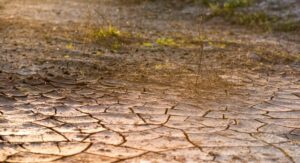When Waters Rise: Climate Change’s Role in Texas’s Deadly July Floods

The pre-dawn hours of July 4th, 2025, should have been peaceful along the Guadalupe River in Texas Hill Country. Instead, they became a nightmare that claimed over 120 lives, including 27 children and counselors at Camp Mystic. As someone who’s spent countless nights camping along Texas waterways, I know these places intimately—their beauty, their risks, and increasingly, their unpredictability.
The tragedy raises a critical question: Did climate change contribute to this devastating flood? The answer, according to multiple scientific analyses, is a sobering yes.
The Perfect Storm: What Happened That Night
Four months’ worth of rain fell in just four hours. Let that sink in for a moment. The Guadalupe River at Hunt surged 26 feet in 45 minutes, transforming from a gentle waterway into a wall of destruction.
Having witnessed flash floods during my years exploring Texas Hill Country, I can tell you this was beyond anything the region typically experiences. The river reached 37.52 feet at Hunt, marking the highest level ever recorded, surpassing previous flash flooding from 1987 by almost a foot.
The remnants of Tropical Storm Barry collided with a stalled weather front. No jet stream was present to push the moisture-laden system away from Texas. The result? A stationary deluge that dropped over 20 inches of rain in some areas.
The Climate Connection: More Than Weather
Multiple rapid attribution studies have confirmed what many of us suspected: climate change made this disaster worse. ClimaMeter’s analysis found that meteorological conditions leading to the July 2025 floods in Texas are up to 2 mm/day wetter (up to 7%) compared to similar past events.
Seven percent might sound modest, but it’s not. Climate attribution models, employing robust, peer-reviewed methods, have determined that climate change made these floods 20% to 30% more severe than they otherwise would have been.
The science is straightforward. According to the Clausius-Clapeyron equation, the air is able to hold 7% more moisture for every 1°C that the atmosphere warms, which means warmer air can release more liquid water when it rains. With global temperatures having risen approximately 1.2°C since pre-industrial times, we’re seeing exactly what climate scientists predicted.
Flash Flood Alley: A Landscape Under Pressure
Texas Hill Country sits in what meteorologists call “Flash Flood Alley.” I’ve hiked these limestone hills many times. The terrain creates perfect conditions for dangerous flooding—impermeable rock that sheds water quickly into narrow valleys.
But this flood was different. Robert Henson, a meteorologist with Yale Climate Connections, called this latest Texas rain storm roughly a once-in-a-generation event. The area had been experiencing extreme drought, making the hard-packed soil even less able to absorb the sudden deluge.
When a large amount of rain falls very quickly, the ground can’t soak up the water. If the terrain is even a little bit hilly, all that excess water is funneled into low areas, picking up speed as it flows downstream.
Beyond This Tragedy: The Bigger Picture
As an outdoorsman who values these wild spaces, I’ve watched weather patterns change over the years. What used to be predictable seasonal rhythms have become erratic. Texas is tied with Arkansas for the second most billion-plus dollar flood events of any state other than Louisiana.
Climate change isn’t creating new risks: rather, it’s amplifying existing ones. Texas already experiences more extreme weather events with damages exceeding a billion dollars—floods, heatwaves, hurricanes, wildfires and more—than any other state.
The pattern is clear. Across the U.S., the heaviest storms are projected to drop more rain as the planet continues to warm. What we once called 500-year floods are becoming routine.
The Human Cost of a Changing Climate
Behind every statistic lies a story. Camp Mystic director Dick Eastland, who purchased the camp in 1974, was among those who perished. Night security guard Glenn Juenke became a hero, placing children on mattresses to help them ride out the floodwaters safely.
These weren’t just numbers in a climate study. They were people living their lives, enjoying the outdoors, trusting in systems designed to keep them safe.
Lessons From the Riverbank
Years of camping have taught me to respect water’s power. But climate change is rewriting the rules we’ve lived by. Andrew Dessler, director of the Texas Center for Extreme Weather at Texas A&M, says the floods are “exactly what the future is going to hold.”
The tragedy also highlighted systemic failures. Questions arose about whether staffing cuts at the National Weather Service affected warning coordination. The Trump administration has defunded much of the operations of the National Oceanic and Atmospheric Administration, the nation’s chief climate and scientific agency responsible for weather forecasting.
What This Means for Outdoor Enthusiasts
For those of us who live for the outdoors, this disaster demands we rethink our relationship with weather. Traditional camping wisdom—checking forecasts, knowing escape routes, avoiding flood-prone areas—remains vital but insufficient.
We need to understand that “normal” weather patterns are shifting. A 30% increase in rainfall intensity means our go-to camping spots along rivers may no longer be safe during certain conditions. Early warning systems that worked for our parents’ generation may not adequately protect us today.
Moving Forward: Adaptation and Responsibility
The Texas floods remind us that climate change isn’t some distant threat—it’s reshaping the landscapes we love right now. Despite the misinformation and anti-science rhetoric that often overwhelms social media after disasters like this, a majority of people—63 percent in Texas and across the U.S.—are already concerned about climate change.
As outdoor enthusiasts, we have a responsibility to understand these changing risks. This means staying informed about climate impacts, supporting robust weather monitoring systems, and advocating for policies that address the root causes of intensifying extreme weather.
The Waters Keep Rising
The Guadalupe River eventually receded, leaving behind debris, heartbreak, and hard questions. Scientific analysis has confirmed what we suspected: climate change made this disaster more severe than it would have been in a stable climate.
This isn’t about politics or ideology—it’s about physics, meteorology, and the safety of everyone who ventures into the outdoors. Climate change is driving more intense rain storms across much of the U.S., which drop more water in shorter periods of time and make dangerous floods more likely.
For those of us who find solace and adventure in nature, understanding these realities isn’t optional anymore. The landscapes we love are changing, and our approach to enjoying them safely must evolve accordingly. The children who lost their lives at Camp Mystic deserved better. We owe it to them—and to future generations of outdoor enthusiasts—to face these challenges head-on.
The water has receded, but the lessons remain. In a warming world, every camping trip, every river crossing, every outdoor adventure requires us to think differently about risk. The stakes have never been higher, and neither has our responsibility to act.






